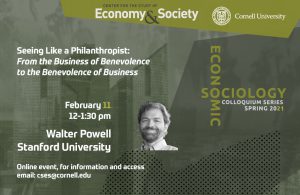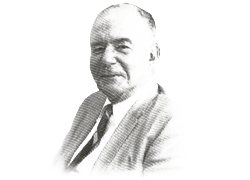Walter Powell, Stanford
Seeing Like a Philanthropist: From the Business of Benevolence to the Benevolence of Business
- 12:00 - 1:30 PM
- via Zoom

Over the course of American history, philanthropists have been both praised and pilloried, depicted as redeemers of democracy and a threat to it. Despite the shifting social terrain in which they have operated, philanthropists — and the organizations they create — have grown in number and influence, acting as a catalytic force in the genesis and development of the modern nonprofit sector. Philanthropic largesse has also played a powerful role in shaping civic life and political affairs. We argue that it is important to understand not only how philanthropists are seen, but also how they see. In narrating the development of American philanthropy from the late 19th to the early 21st centuries, our aim is to capture changes in what it means to “see like a philanthropist”—that is, to illuminate the meanings and ends of philanthropic wealth. We focus on three core influences on philanthropic visions: (1) the sources of philanthropic wealth, (2) its organizational embodiments, and (3) the criticisms leveled at its outsized influence. We examine the reciprocal dynamic between political challenges to elite power and philanthropic visions. We show that philanthropists have transposed the practices they used to earn their great fortunes into the organizational routines of their philanthropies and turned these into requirements for those who receive their funding. The actions of past philanthropists weigh heavily on future philanthropists, Consequently, the political might of philanthropy both channels and enables the critiques to which its influence is subjected. In narrating this long arc of history, we show how the super-rich’s perceptions of themselves and their role in public life have evolved as well as the myriad ways philanthropy has altered civic and political discourse.

